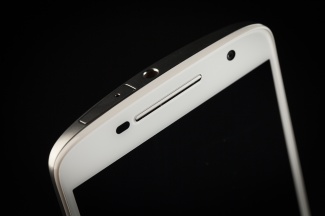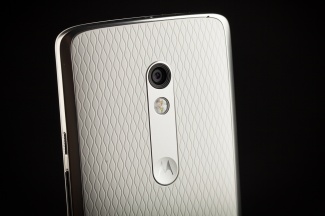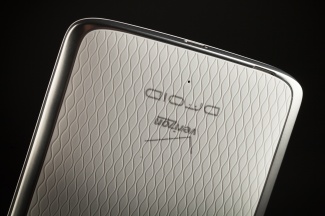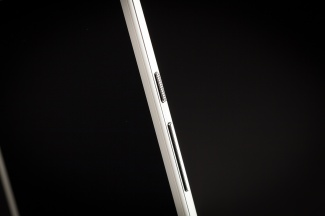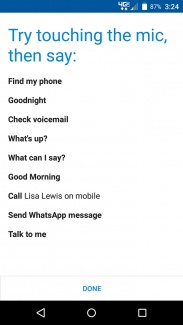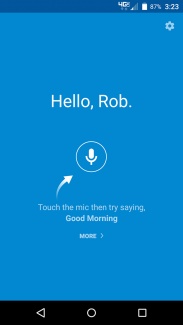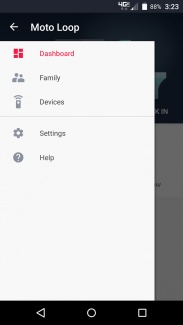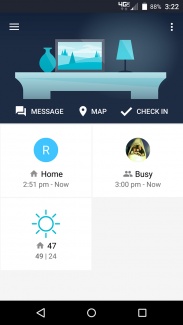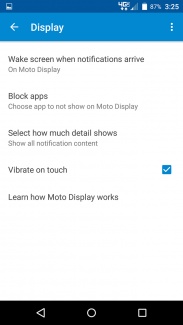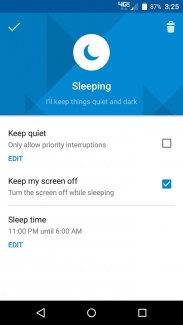
Fans of the Droid Maxx series finally have something to get excited about. After two years of waiting for a sequel, Verizon and Motorola finally teamed up again to release a worthy successor to its first Maxx, the Droid Maxx 2.
The Maxx 2 is actually a re-branded Moto X Play, which is a more affordable version of the Moto X Style. It features a good balance of mid-range and high-end specs. Since the Moto X Play isn’t available in the States, we welcomed the Maxx 2 with open arms.
At $384 (or $16 for 24 months) off contract, the Maxx 2 is not only competitively priced, it’s able to hold its own against other flagships.
Simple design
Motorola doesn’t make the flashiest phones in the world, but the company knows how to build quality handsets. Whether it’s an entry-level Moto E or the flagship-caliber Droid Turbo 2, Motorola always invests a lot of time in its craftsmanship.
The Droid Maxx 2 isn’t a flagship phone, so you won’t find a metal body or frame, but Motorola’s choice of materials give it a premium look and feel.
The back has an etched pattern with a soft rubber-like texture, which offers fantastic grip with none of the slipperiness found on other phones. The silver frame adds to the premium look, even though it’s plastic disguised as metal.
The body has a nano coating that acts as a water repellent. The phone shouldn’t be mistaken for waterproof, but it will be able to survive accidental spills, splashes, and light rain.
A major highlight of the design has to be its size, which is 148.0 x 75.0mm. The iPhone 6S Plus is 158.2 x 77.9mm, which is much bigger. Considering that both phones have massive 5.5-inch screens, the Maxx 2 has a clear advantage. It’s a lot easier to use and hold one-handed.
The downside is that the Maxx 2 is thicker. It’s actually 8.9mm at the sides, but the rounded back pushes it to 10.9mm at its thickest point. In comparison, the iPhone 6S Plus is only 7.3mm thick. However, the Maxx 2’s rounded back gives you the impression that it’s thinner than it actually is.
Although Motorola didn’t open up its Moto Maker customization engine for the Maxx 2, the removable back can be swapped out for a different color, which is arguably a benefit because you can change it any time you want.
Looking at the front of the phone shows speakers at the top and bottom that could easily be mistaken for stereo sound. Unfortunately that’s not the case, as the speaker phone and media playback sounds will only fire through the bottom speaker. The top speaker is reserved for in-ear phone calls.
Fantastic display and performance
Mid-range phones usually come with a below-average screen to keep the price down. However, the Maxx 2 sports a generous 5.5-inch 1080p screen, which equates to a resolution of 1,920 x 1,080 pixels. This is the sweet spot, since it offers the perfect balance between viewing experience and battery life.
The screen is an LCD panel instead of the traditional AMOLED screen that we’re accustomed to on past Motorola phones. As such, it’s technically not as energy-efficient, but the battery size more than makes up for that. Although the colors don’t pop as much as they would on an AMOLED screen, the Maxx 2 looks sharp and viewing angles are very good. Plus, it performs well in sunlight, which is usually the case with LCD panels.
The Droid Maxx 2 features the octa-core Qualcomm Snapdragon 615 processor. Although a mid-range chip, it’s more than adequate for just about anything you can throw at it. Videos and games play smoothly, and I didn’t notice any stuttering or lag when navigating the user interface or opening and closing apps.
Internal storage is limited to 16GB, but the included MicroSD slot means that you can add up to an additional 128GB for all your pictures, music, and videos.
As mentioned before, this phone doesn’t have stereo sound, but at least the one speaker is front-firing. The sound is nothing to brag about, which is expected for a phone in this price range.
Crazy good battery
Battery life is becoming increasingly important because so many phones continue to fail to last through an entire day. Motorola has been a leader in battery life ever since the company introduced the Droid Razr Maxx back in 2012.
The Maxx 2 sports a whopping 3,630mAh battery, which is rather large for a phone of this size. The similar-sized iPhone 6S Plus only has a 2,750mAh battery, and the larger Galaxy Note 5 features a 3,000mAh battery. As such, the Maxx 2 is one of the most dominant phones in terms of battery life.
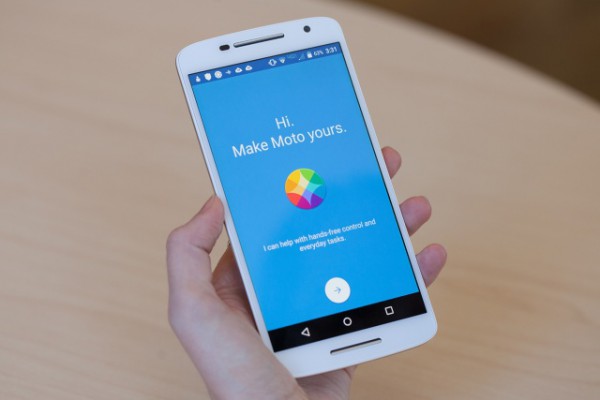
In our battery rundown test in which we play continuous video while the phone is connected to 4G LTE (not Wi-Fi) and the display is set to about 60 percent brightness, the Maxx 2 performed spectacularly. It went from 100 percent to 0 percent in 11 hours and 4 minutes. How does this translate in real life? Motorola promises 48 hours, which is not out of the realm of possibility with moderate use. Last weekend, I went from Friday morning well into Sunday without charging it once. Power users are likely to be limited to 30-36 hours, but even that’s phenomenal.
When it comes to most smartphones, you begin to panic when you hit 30 percent battery, but 30 percent on the Maxx 2 is like 80 percent on most other phones.
On top of the amazing battery life, you also get quick charging capability, or as Motorola calls it, “turbo power.” That’s just another term for Qualcomm’s Quick Charge 2.0.
If you do find yourself in a pinch, you can juice up pretty darn fast using a quick charger. Starting from 0 percent, our tests showed that the Maxx 2 will charge to 25 percent in just 20 minutes, 50 percent in 45 minutes, and 100 percent in 2 hours. This means that you can grab 12 hours of life after just 20 minutes of charging, or about 24 hours after just 45 minutes.
The downside is that a quick-charging compatible charger doesn’t come in the box. You can buy one directly from Motorola, or any third-party charger will work, as long as it’s certified with Qualcomm’s Quick Charge 2.0 standard.
Unfortunately, wireless charging isn’t onboard, but you won’t miss it with battery life like this.
Average camera
Motorola has never blown anyone away with its cameras, but the company has improved greatly over the past couple of years. The Droid Maxx 2 sports a 21-megapixel main rear camera along with a 5-megapixel front-facing lens. When you consider the rear cameras on the iPhone 6S and 6S Plus are 12-megapixels and the Galaxy S6 sports 16-megapixels, this is very generous for a phone in this price range.

However, it’s not all about the megapixels. Megapixels only make it easier for you to crop images, but none of that matters if the quality is subpar. The Maxx 2 handles brightly lit situations very well, but the lack of optical image stabilization shows up in low-light shots, in which a decent amount of noise is present. There is a Night Mode, which does cut down on the noise, but at the expense of lowering the megapixel count down to 3.7. Ouch.
The camera software itself is very minimal with limited controls. It’s meant to be a simple point and shoot. In fact, it’s so simple, that you can tap anywhere on the display to capture a shot. For those who like to tweak things, there is a drag to focus with exposure control option.
Although it has a high megapixel count, the Maxx 2 cannot record 4K video. This isn’t going to be a big deal for most people, though. It can record up to 1080p (1920 x 1080) at 30 frames per second, which is more than enough.
The front-facing camera doesn’t include flash, but the display can be used for the same purpose. There is also a Best Shot mode that will automatically pick out the best selfie photo from a series of shots, but I was unable to get that to work.
Useful Motorola software
The Droid Maxx 2 runs Android Lollipop 5.1.1 out of the box, which is a bummer since the Android 6.0 Marshmallow update has been available for over a month. However, Motorola and Verizon promise that the Marshmallow update is coming very soon.
What separates Motorola from other Android manufacturers is its software on top of Android. While other manufacturers continue to muck up Android with a different look and useless apps, Motorola preserves the pure Android experience and includes some very useful features.
 Yaspan Tech, Computers, Gadgets, Reviews, News and Analysis
Yaspan Tech, Computers, Gadgets, Reviews, News and Analysis
